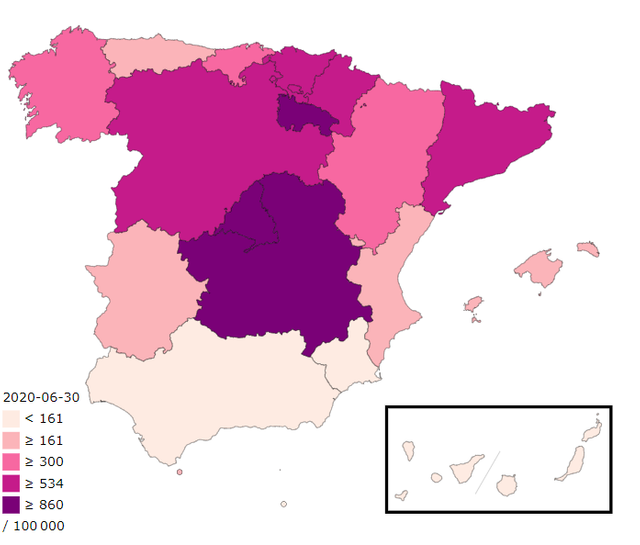EL PAÍS spoke with experts about the increase in Covid-19 cases, which they said was due to a hasty de-escalation process and said they should be dealt with with better contact tracing and data management.
this is the consequence ¿Por qué España está siendo golpeada nuevamente por la pandemia de coronavirus.

The coronavirus pandemic caught Spain unawares back in March, with insufficient personal protective equipment in hospitals and a lack of resources in senior residences. But now, five months later, the country is the European Union state with the worst figures in what already can be classed as a second wave. According to the European Center for Disease Protection and Control, the cumulative incidence of the virus over the last 14 days is now at 152 cases per 100,000 inhabitants, ahead of Malta (119), Romania (88) and France (54).
A month ago, the positive cases being detected in Spain were mostly among young people, and they were asymptomatic. But the spread of the virus has seen a recent rise in hospitalizations and deaths. The concern among health chiefs has risen greatly. “Fernando Simón [the director of the Health Ministry’s Coordination Center for Health Alerts] made it clear,” explained an attendee at a meeting of regional health chiefs last week. “The ministry did not think that we would see these rates of infection until the fall.”
EL PAÍS has spoken to several experts from a number of different areas to explore the reasons for this new spike and the possible ways out of this predicament. The answers range from poor management of the deescalation process and the lack of contact tracers, to the lack of compliance with prevention measures on the part of citizens.
If a new lockdown is to be avoided, they add, the management of the data needs to be improved, and there needs to be quicker intervention in any outbreaks, faster diagnostic tests and more contact tracing. This formula has been cited over and over again in recent months, but the country’s administrations have not been able to implement it.
These are the three questions that EL PAÍS put to the experts:
1.What situation do you consider Spain to be in right now with relation to the coronavirus?
2.Why is Spain the European country with the highest incidence rate?
3.What needs to be done now before the reopening of schools and the start of the fall?
Travelling from EU+ countries is allowed without restrictions.
EU+ comprises EU Member States plus Norway, Switzerland, Iceland, Liechtenstein, Andorra, Monaco, Vatican City State and the Republic of San Marino.
All passengers arriving by air or sea transport must undergo a temperature check, which must be below 37.5 degrees Celsius. Cruising companies can take passengers temperature before arriving at a Spanish port.
Travelling from Spain or returning to Spain
Some countries are imposing restrictions or quarantine periods on travellers arriving from Spain. You can consult this map (in Spanish) for an updated overview of travel restrictions applied to Spanish travellers.
Travel Information from the Ministry of Foreign Affairs can be found at Asistencia consular coronavirus
Travelling from EU countries is allowed without restrictions.Travelling from Norway, Switzerland, Iceland and Liechtenstein, as well as United Kingdom, Andorra, Monaco, Vatican City State and Republic of San Marino, is allowed without restrictions.
Certain countries have established restrictions or quarantine periods on people arriving from Spain. You can consult this map (in Spanish) for an updated overview of travel restrictions applied to Spanish travellers.
Travel Information from the Ministry of Foreign Affairs can be found at Asistencia consular coronavirus
Rules and Exceptions
All passengers arriving by air or sea transport must undergo a temperature check, which must be below 37.5 degrees Celsius. Cruising companies can take passengers temperature before arriving at a Spanish port.
Mandatory Travel Documentation
All travellers must fill in a Public Health Form, or use the free app "Spain Travel Health" (SpTH). After completing the form, passengers will obtain a QR code which they must present upon arrival in Spain.
Tour operators, travel agencies and transport companies must inform tourists and travellers of their obligation to present the Public Health Form at the destination airport or port.
The European Union has lifted its internal border controls within the Schengen area and has issued a recommendation for authorising entry for citizens of non-EU countries, which each country will apply according to the reciprocity principle. Following these criteria, Spain permits entry to citizens of the following countries: Australia, Canada, China, Georgia, Japan, Morocco, New Zealand, Rwanda, South Korea, Thailand, Tunisia, and Uruguay.